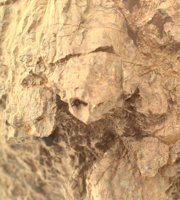The discovery is an "exciting" breakthrough in the search for alien life.
The study found that near-surface winds can reach up to 160 kilometers per hour.
"Rogue planets" don't orbit stars, free-floating on their own instead.
The massive protoplanet is around 5 million years old and about 437 light-years from Earth.
Scientists say this does not include more than 8,000 additional candidate planets awaiting confirmation.
NASA's Perseverance robot spotted the intriguing rock on Aug. 31 and stopped to snap a photograph.
The giant hole was spotted facing Earth, likely firing solar winds at our planet that could lead to spectacular auroras.
The James Webb Space Telescope shows a jaw-dropping view of a planet-forming disc, nicknamed the "Butterfly Star," appearing to have wings.
"We’ve never seen the inside of a planet in such fine detail and clarity before."














